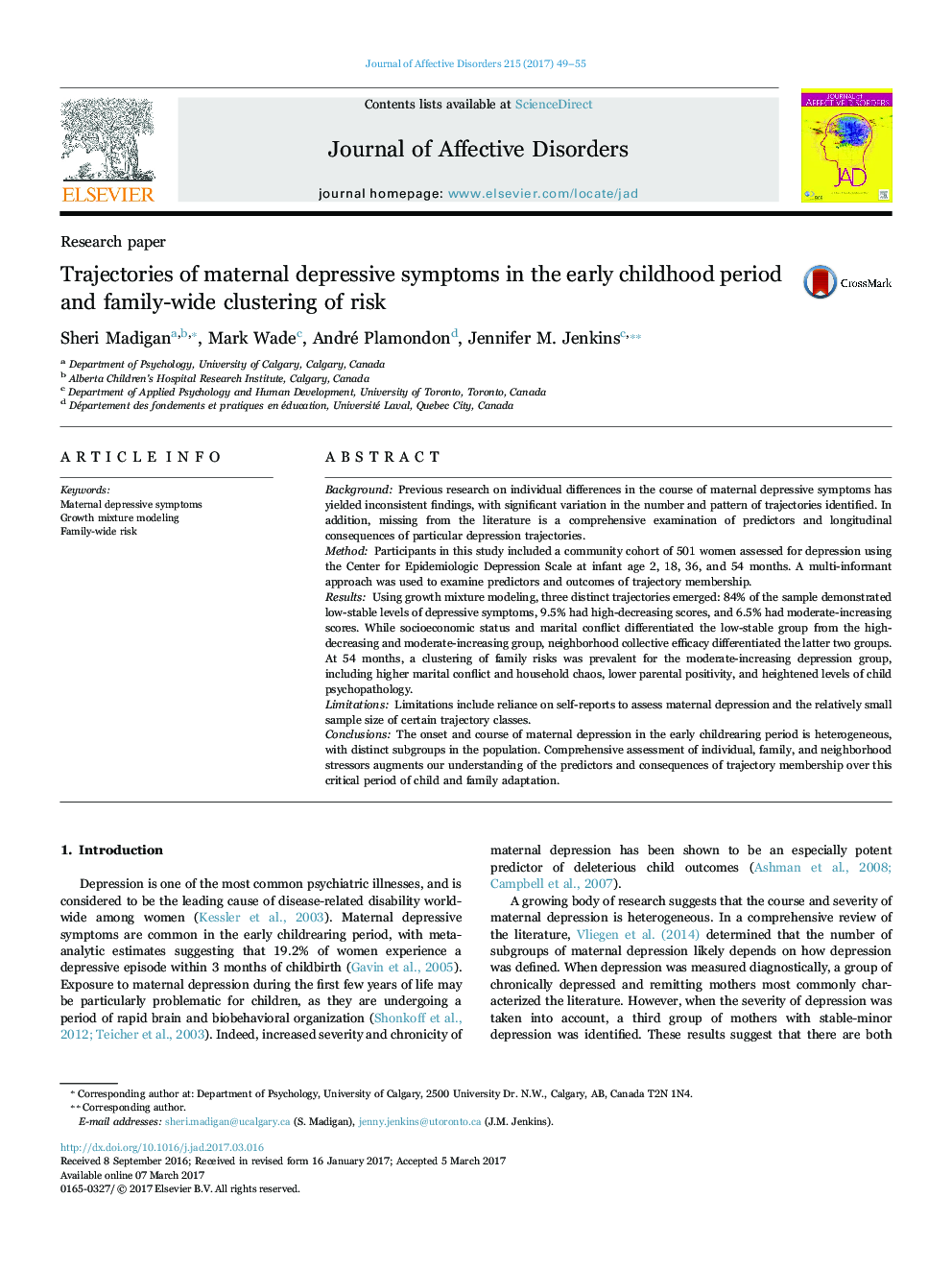| Article ID | Journal | Published Year | Pages | File Type |
|---|---|---|---|---|
| 5722325 | Journal of Affective Disorders | 2017 | 7 Pages |
â¢Onset and course of maternal depression is examined from child age 2-54 months.â¢Trajectories: low-stable (84%), high-decreasing (9.5%), moderate-increasing (6.5%).â¢Elevated trajectory groups were in the clinical range for depression at 2 months.â¢The moderate-increasing group was associated with significant family-wide risk.
BackgroundPrevious research on individual differences in the course of maternal depressive symptoms has yielded inconsistent findings, with significant variation in the number and pattern of trajectories identified. In addition, missing from the literature is a comprehensive examination of predictors and longitudinal consequences of particular depression trajectories.MethodParticipants in this study included a community cohort of 501 women assessed for depression using the Center for Epidemiologic Depression Scale at infant age 2, 18, 36, and 54 months. A multi-informant approach was used to examine predictors and outcomes of trajectory membership.ResultsUsing growth mixture modeling, three distinct trajectories emerged: 84% of the sample demonstrated low-stable levels of depressive symptoms, 9.5% had high-decreasing scores, and 6.5% had moderate-increasing scores. While socioeconomic status and marital conflict differentiated the low-stable group from the high-decreasing and moderate-increasing group, neighborhood collective efficacy differentiated the latter two groups. At 54 months, a clustering of family risks was prevalent for the moderate-increasing depression group, including higher marital conflict and household chaos, lower parental positivity, and heightened levels of child psychopathology.LimitationsLimitations include reliance on self-reports to assess maternal depression and the relatively small sample size of certain trajectory classes.ConclusionsThe onset and course of maternal depression in the early childrearing period is heterogeneous, with distinct subgroups in the population. Comprehensive assessment of individual, family, and neighborhood stressors augments our understanding of the predictors and consequences of trajectory membership over this critical period of child and family adaptation.
